Gaja. It is one of the most iconic names in all of Italian wine. Without Gaja, Barbaresco may not be the grand wine it is today. But they have the most modest entrance to a winery I’ve seen. It is very understated, located on the main street that runs through Barbaresco, a village in the Langhe region of Piemonte, situated on a hilltop overlooking the Lange hills. We missed the sign, it’s so small and modest. There’s no palatial entrance, no big sign, no grand facade. To visit you need an appointment. Luckily we had that, and the big steel door that leads to the winery rolled open upon our arrival.
In the interior courtyard where grapes are crushed we’re greeted by Gaia Gaja, fifth generation vintner, one of Angelo Gaja’s three children. Her sister Rossana is also involved in the family business, working with the Gaja properties in Bolgheri, Ca’ Marcanda and Pieve Santa Restituta in Montalcino, both in Tuscany.
Gaia’s father Angelo Gaja is the current head of the business, and the one most credited with raising Barbaresco’s image around the world. Gaia’s great great grandfather Giovanni Gaja started the winery, in 1859, transitioning the family business from a tavern to a winery. The original tavern building is still there, and it is now home to fermenting and aging barrels of wine.
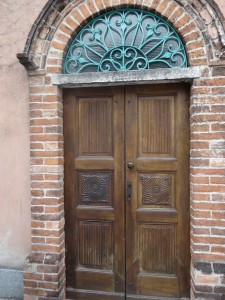
On the day of my visit there is construction going on, adding capacity to the crush pad to triple the capacity for receiving just harvested grapes into the winery, allowing them to be processed sooner to retain their freshness. This prevents the grape deliveries from backing up and heating up under the hot sun. Gaia says something is always under renovation, because after all the winery is old and they do need to keep up with modern innovations while always keeping the making of Barbaresco firmly rooted in tradition. “The winery has been built by five generations,” she says, “and each one has its own view and its own space so it’s not like we’re building a winery from zero.” How lucky to have such a rich history.
Before Gaja, Barbaresco got no respect. Barolo was king; Barbaresco was the lowly, under appreciated sibling. Both wines are made from 100% Nebbiolo grapes, and grow best in Piemonte, thanks to the soils and climate. Barbaresco existed in the shadow of Barolo for centuries. “Barbaresco had for a long time this complex that it couldn’t get to the same level of Barolo. It was chasing but was always remaining number two,” says Gaia. “It was not as structured, was not tannic enough, was not ageable enough, all these things so this is also a matter of pride for us we are not from Barolo we are from Barbaresco.”

It was Gaia’s grandfather, the third generation Giovanni Gaja, who put the winery, and Barbaresco on the map. “He understood that great value we had was the land.” At a time when Barbaresco was ruled by negociants who bought grapes and made wine under their own label, Giovanni started buying vineyard property. At the time, Italy was still under the system of sharecropping, so those that farmed the land did not own it. By owning the vineyards, Giovanni knew that Gaja could control the quality of the grapes.

“My grandfather in the 30’s 40’s 50’s bought some of the best property because he was one of the first to buy land, he had no competition from the negociants or anyone else,” Gaia says. “The few people that were putting their money into buying a piece of land were going to Barolo because historically Barolo was the most important appellation and Barbaresco was a little one.”
What Giovanni Gaja did was to show the greatness of Barbaresco. “He showed that maybe Barbaresco can’t achieve the power of Barolo but it can achieve peaks of elegance that are only of Barbaresco because the Barbaresco doesn’t get earthy but is always ethereal, and even if you age it for four years it continues to be a little more elegant than Barolo,” Gaia says. Indeed, Barbaresco is now known for being softer, more approachable, drinking earlier but still able to age well. He also brought reliability to the quality of the Gaja wines.
Gaia’s father Angelo started working in the winery in 1961. He had his own ideas, and was inspired by what Robert Mondavi was doing to promote Napa Valley wines in the late 1960’s. Like Mondavi, he was a crusader for Barbaresco, traveling extensively to promote the wine and the Gaja winery. He also brought innovations into the winery, using French oak barriques, planting high density vines and establishing single vineyard designate wines. “Our first one was Sori San Lorenzo in 1967 and then Sori Tildin.” It all made a difference. “It’s incredible now how I start to hear around the world, people tell me ‘you know I always preferred Barbaresco to Barolo,'” says Gaia. “Just to tell you how the perception of people changes because 10, 15 years ago no one would have ever said I prefer Barbaresco to Barolo. It was unthinkable and now they do it.”
The Barbaresco DOC was established in 1966 and the DOCG was granted in 1980.
Gaia walks us through the cellars, where the 2012 and 2011 vintages are aging. As the winery grew over the generations, they needed more space, but couldn’t expand the current winery since they had neighbors on each side. So when the castle of Barbaresco across the street became available, they snapped it up. It was in tremendous disrepair and took time to renovate. It’s connected to the original winery via a tunnel under the main street in Barbaresco. The views look out over the Piemonte countryside and the river Tanaro.
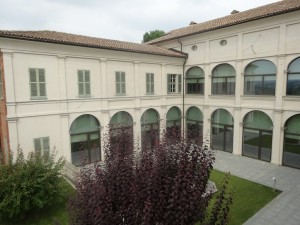
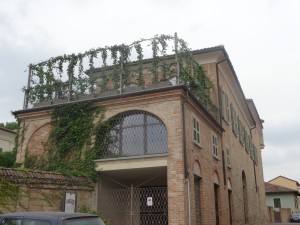
Gaia joined the family business in 2008 and now travels to spread the word about Gaja wines in the US, Asia and Europe. She’s just back from the Aspen Food & Wine festival. Her parents are still very active in running the winery. They recently celebrated their 150th anniversary, and in the castle there is a wall display showing photos of all five generations, old labels and winery employees, many of whom have been at Gaja for decades. Gaia explains that they own 42 plots of vineyards (250 acres) in Piemonte, and they have a full time workforce to look after the vines and harvest and make wine. When there’s nothing happening in the winery or vineyards such as pruning, they make the compost for the vines and other projects. Gaia says by keeping a steady team they really learn the land and the vines and how to work with the grapes, and is another tool in the quality toolbox.
Another of Angelo Gaja’s innovations was to plant international varieties, including Sauvignon Blanc and Chardonnay in Piemonte. In fact the Chard, Gaia & Rey, is named for Gaia and her great grandmother, Clotilde Rey, who was married to Angelo Gaja, the second generation Angelo Gaja that is. She ran the winery with a firm hand. “My family was very inspired by her so while he [Angelo] was the winemaker she was a very charismatic woman and she was the controlling one. She brought great ambition in the family so to her we dedicated Gaia & Rey.”
It’s risks like making international varietals in Piemonte, or introducing technology into traditional winemaking techniques that have truly propelled Gaja to be the leader in Barbaresco around the world.
Gaia and her sister Rossana have a tremendous legacy to build upon, but also a great responsibility to uphold the family tradition of the previous four generations. She says they have always been proud to be a Barbaresco house, but at the same time have holdings in Barolo, to meet the demands of an evolving market. It is a responsibility she wears well at a young age. Gaia continues to travel with her father Angelo to make sure the message of Barbaresco continues to be heard.
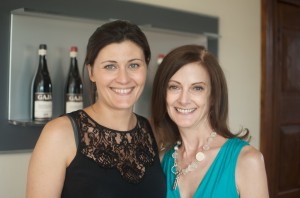
At the end of our visit, Gaia makes a recommendation for lunch. She sends us just down the road from the winery, at a trattoria called Antica Torre, under the medieval Barbaresco tower. “They make the best tarajin tagliati you can have.” It’s a regional specialty,with finely cut pasta in a meat sauce. She is absolutely right. With a glass of Barbaresco, it is divine.

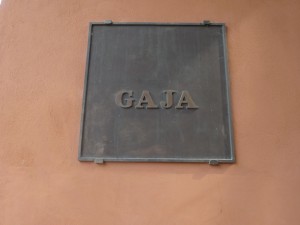
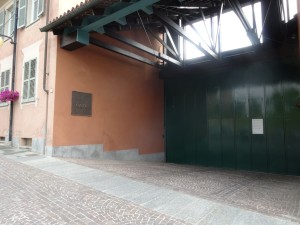
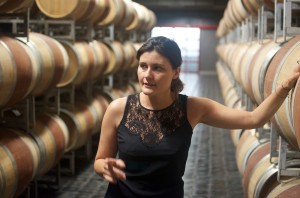
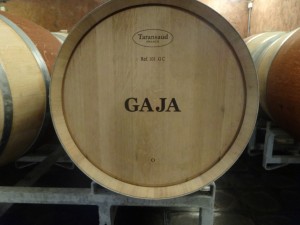

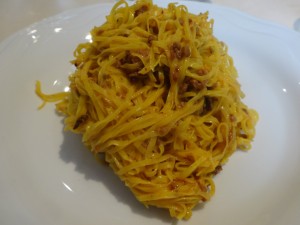
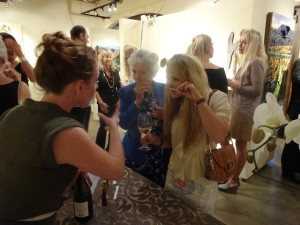

12 Comments
Love your recommendation about Gaja and would love to make an appt to tast their wines. Will be in the Piedmont area around the June 15 – 18th. If you can please forward an email address to me that would be perfect.
Thank you,
MIchele Addison
Associate Publisher
Ocean Drive Magazine
A good article about Gaja. I’m going to Piedmont in September and would love to visit them. Would you be able to share with me their contact details to fix an appointment? Noticed they don’t have a website with the relevant details.
We will be visiting the Piedmont area October 25~Nov 1st 2014. A visit to Gaja would be an excellent addition to our itinerary. Thank you for the article!
Matt
Thank you for the well written and informative information on Gaja. We are a small winery in Dry Creek Valley..Healdsburg in Sonoma County, California. Alexis joined the family winery full time in 2012 and has become Assistant Wine Maker. Gerry has been making our fully estate wines since 2001 with a broad and deep background in the World of Wine since 1968.
We will be in near Gaja May 22 to May 25, 2015 driving from Garessio and would appreciate the opportunity to visit Gaja on May 22, 23 or 24, 2015. Do you have contact information available for this purpose?
Thank you for your consideration and time.
Regards, Diane
Hi Diane,
Thank you for your kind words about my article. Gaja is not open to the public and I was fortunate enough to be able to arrange a visit as media. I would love to suggest a visit to Ceretto, outside of Alba. The winery is open to the public and their wines are beautiful and the tasting room is unique. http://www.ceretto.com/ceretto-wine-cellar/wineries-visits.
Enjoy your time in Piedmonte.
Mary
Excellent article – thanks for writing and posting. My wife and I are visiting the region in Sept 2015, and would love to visit Gaja. How may I contact them for a tour and/or tasting?
Thanks in advance.
David
Very descriptkve post, I enjoyed that a lot.
Will there be a part 2?
Thank you. Alas, no sequel planned at this time.
Gaja has some of my most favorite wines. Im bringing my daughter on a special trip at the end of Sept – October 5th. I’d love to visit and tour the winery. How do I go about scheduling? This is would be dream come true for us both.
I’d also be interested in purchasing a wine barrel from there. Is that possible?
Hi Karen,
Gaja is indeed a special place. Unfortunately I can’t help with your scheduling a visit. Mine was a media visit. I suggest contacting the winery directly. I have no idea if you can buy a barrel or not.
Sorry I can’t be of assistance here.
Good luck,
Mary
For all those willing to visit GAJA, you can write to sales@madeinitalytravel.com. I’m a resident of Barbaresco, organizing tours with among others GAJA. Please do consider A/groups or individuals but limited 12 persons, no weekend, only 11 AM or 3 pm. Thanks for sharing the message.